With the best turbo trainers being so sophisticated – and even fun when connected to a virtual cycling app – increasing numbers of triathletes are turning their backs on the great outdoors in favour of their home training set-up.
Gone are the days when you’d simply lock your bike into a ‘dead’ turbo trainer and use a dial to create resistance.
The more sophisticated turbo trainers in come with power meters, Bluetooth connection and plenty of built-in virtual resistance, so you can push yourself to the limit without having to halt because of the cold.
Plus, they also allow you to dial in your bike position on your triathlon bike without the fear of being on the aero bars while on busy roads.
- Indoor virtual cycling training platforms: pros and cons
- Indoor virtual cycling training platforms: 6 of the best
With the prices of most of the turbo trainers on test higher than many entry-level bikes, they’re a serious investment, but certainly a worthwhile one if you’re going to use it year-round.
Best turbo trainers for triathletes
Elite Direto XR-T
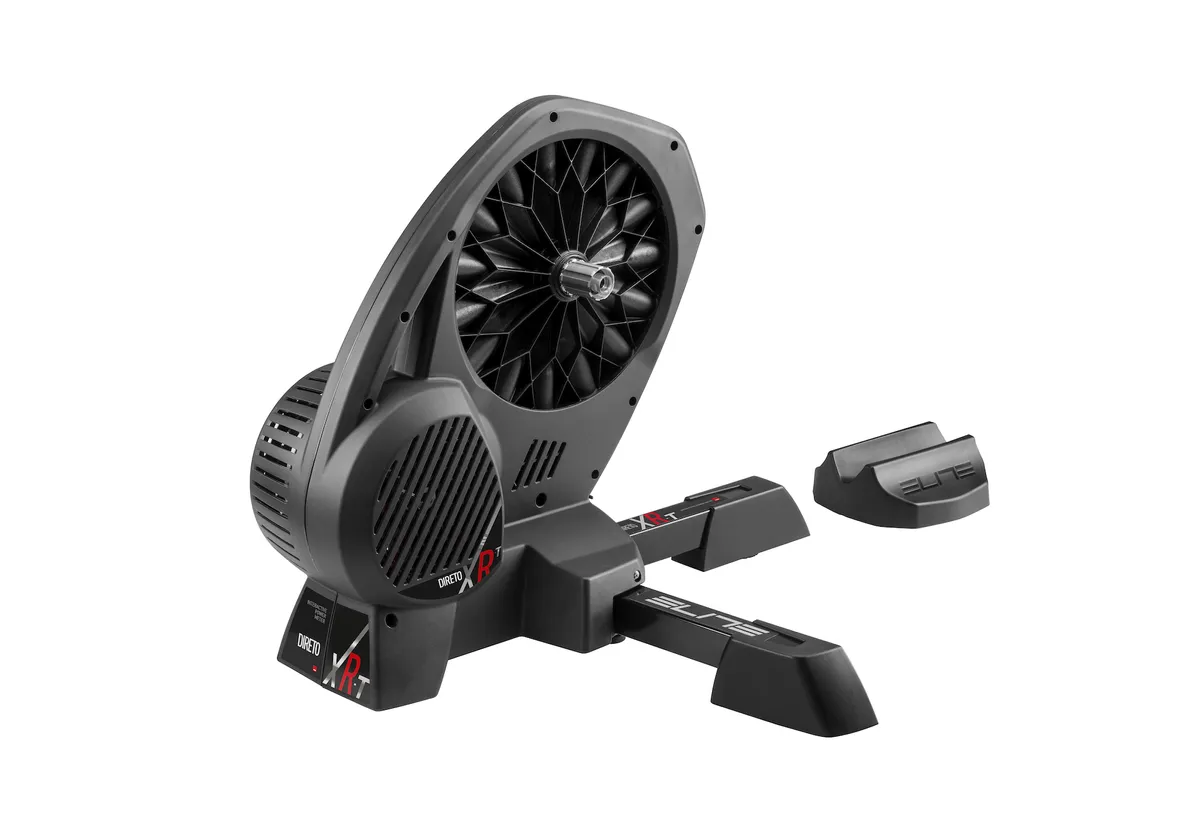
- £829.99 / $949
This is Elite’s top-of-the-range trainer. Unlike the XR version, which comes with an 11-speed, Shimano 105 cassette, the Direto XR-T doesn't. Apart from this they’re essentially the same product.
In the box you'll find the trainer, a riser block and adapters for disc brakes, but what you don't see is that with your purchase you'll also get a one-year membership to Elite's My E-Training software and a one-month subscription from Zwift.
It's not difficult to move around, is study and has a ride feel that is unrivalled. The power adjusts quickly and smoothly, while a max resistance of 2,300w means even the best age-groupers won't trouble this machine.
Verdict: Hard to fault; a turbo that's well worth the lofty price.
Score: 92%
Read our full review of the Elite Direto XR-T here.
Tacx Flux S
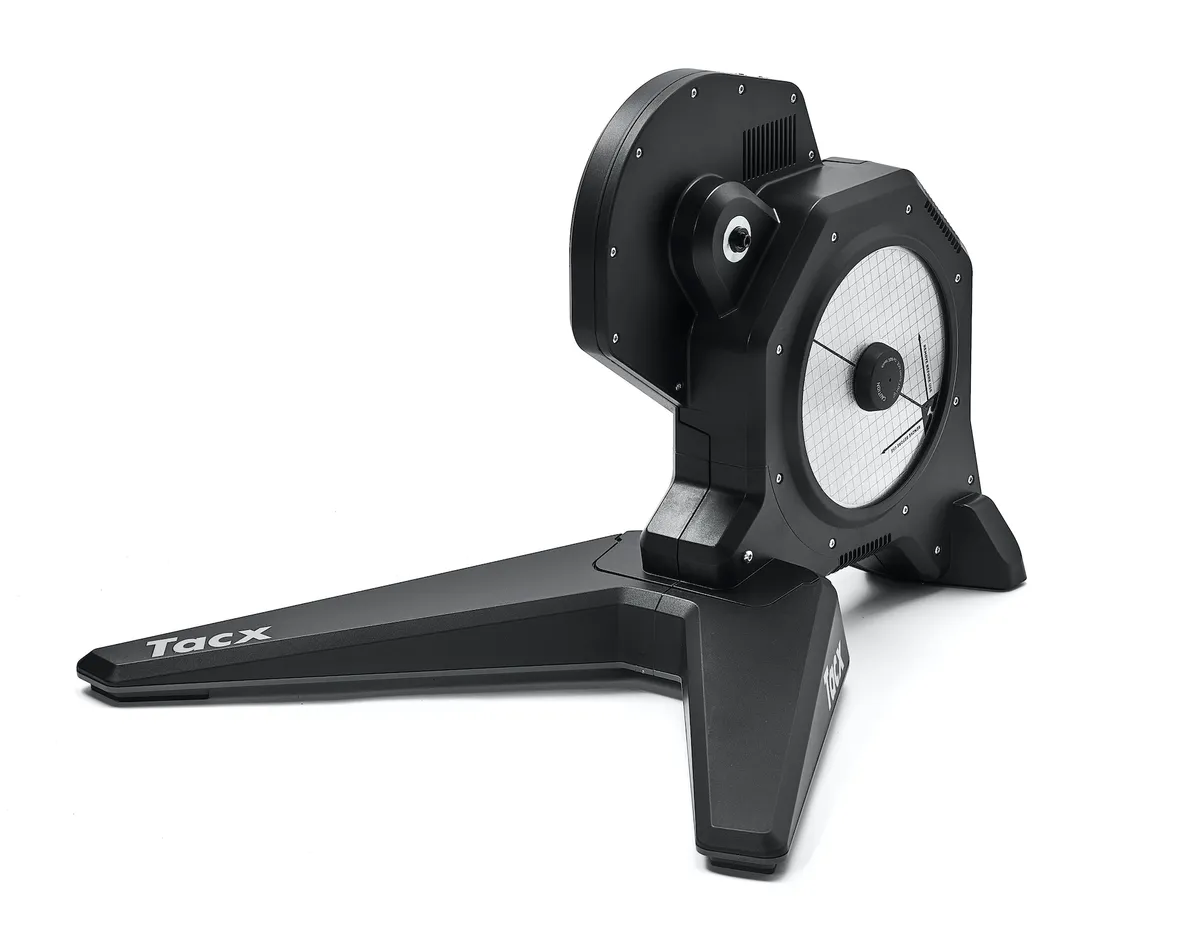
- £599.99 / $749.99
The Tacx Flux S brings direct drive down to a much more palatable price point. But that does mean compromises, including /-3% power accuracy and no thru-axle compatibility out the box.
Set-up is simple, requiring you to put the legs on, add a cassette and bike, then plug in. It’s impressively quiet and has a pretty good ride feel; in fact, we’d struggle to tell it apart from more expensive direct drive units when pedalling steadily.
While consistent, the power underread slightly more than 3% compared to our power pedals, but cadence was better with less than 2rpm discrepancy. The Flux S took a few seconds to adjust during intervals and, at over 22kg with fixed legs, isn’t a trainer to be moved regularly.
Verdict: Slow off the mark, but great value for direct drive
Score: 84%
Wahoo Kickr Move

- £1,399.99 / $1,599
Wahoo's new Kickr Move costs you an extra £300/$300 more than the standard Kickr and, after a period of testing, we're not totally convinced this is the one to pick out of the two of them.
The new base aims to give you more realistic riding akin to that in the real world, with 20cm of for-aft motion. It feels more natural than a standard stationary turbo trainer, but doesn't quite replicate the real-world sensation.
That being said, there was a noticeable amount of energy return from this new feature, leaving is fresher than normal.
Most of the other specs are the same as the Kickr, with a maximum power output of 2,200 watts, power accuracy within /-1% and a maximum gradient of 20%.
Setup is relatively straightforward, too, though the whole thing does weigh 29kg.
See our full Wahoo Kickr Move review for more.
Verdict: Undoubtedly an impressive trainer, but not the perfect package.
Score: 81%
Elite Suito-T
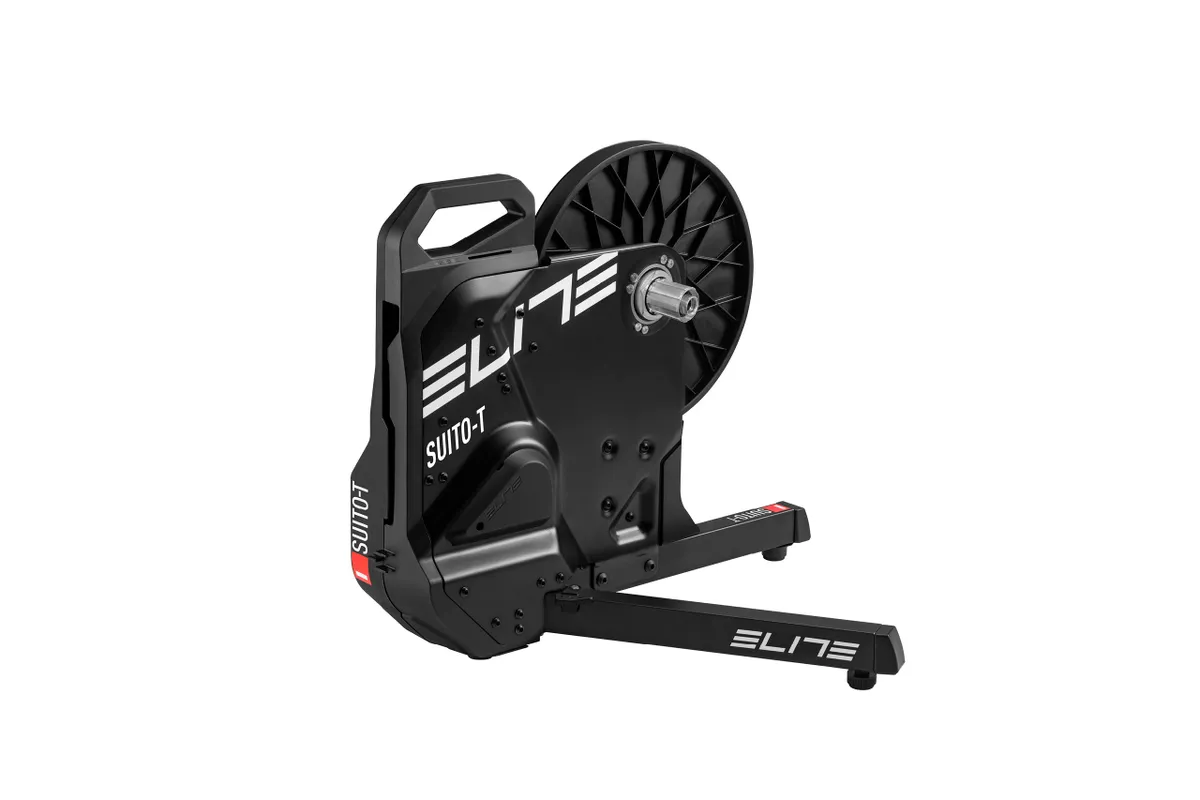
- £639.99 / $799
Weighing 14.5kg, the Suito-T has legs already attached and a convenient carry handle. Once you’ve folded the legs out and loaded your bike on, it’s a case of connecting to Elite’s app, calibrating, before connecting to your favourite training app.
The Suito-T comes with free trials of popular apps such as Zwift, a nice touch to get you started. The Elite simulates gradients up to 15% and the max power it can handle is 1,900 watts – impressive figures for a mid-priced smart trainer.
We found the Suito-T was a little louder than the JetBlack Volt reviewed below, peaking at 65 decibels while riding at 200 watts, but it shouldn’t trouble the neighbours. It’s relatively sturdy but wobbles a little when you’re out of the saddle.
The power is delivered smoothly, although during big efforts in ERG mode it takes a little longer to ramp up than we’d like.
Power accuracy was not quite within its claimed /-2.5% compared to our trusty Favero Assioma pedals, particularly at higher wattages. We found accuracy improved by moving to the small chainring.
If you value a conveniently designed trainer and a decent indoor riding experience without a very big-ticket price, the Suito-T is well worth your consideration.
Verdict: A fine trainer, if not the most accurate on the market.
Score: 85%
JetBlack Volt
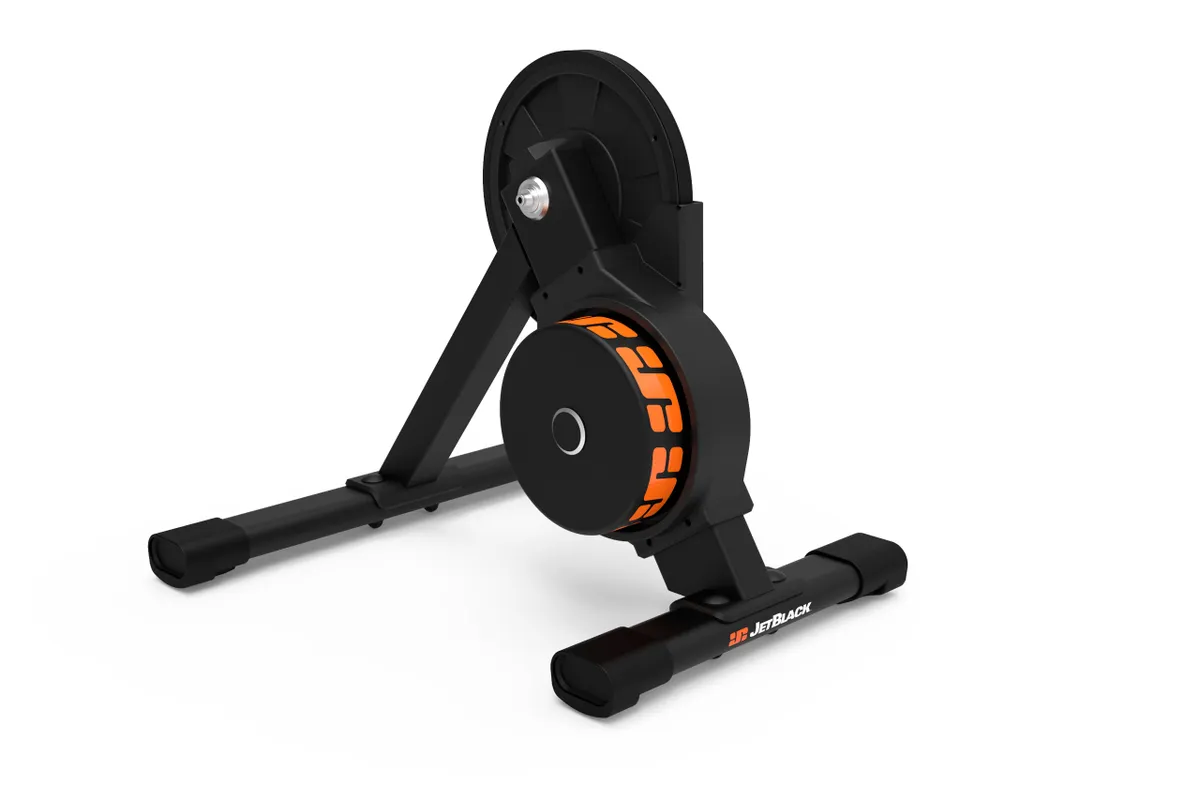
- £699 / $499
The Volt has an 11-speed Shimano/SRAM cassette included to save most riders a job during set-up. That set-up is marginally more effort than the Suito-T reviewed above, but bolting the legs on is only a 5min job.
The unit isn’t prohibitively heavy at 15.4kg, but there’s no carry handle, which is inconvenient, though calibration is simple enough.
The Volt includes everything and more than you’d expect at this price, such as Bluetooth and ANT connectivity, thru-axle adapters, 16% gradient simulation and 1,800 watts at maximum power.
When you’ve paired the power and built-in cadence sensor, the Volt also allows you to pair a heart rate monitor via the JetBlack app, which then displays on-screen in your app of choice.
It’s a useful feature that’s currently unique to the Volt. It felt smooth, didn’t move a millimetre and reacted very sharply during interval sessions in ERG mode, going from 150 to 350 watts in less than two seconds, and without jolting.
Power accuracy is claimed to be /-2.5%, but compared to our Assioma pedals we actually found on average the Volt was inside that. It’s quiet, too, putting out just 61dB at 200 watts.
The Volt is seriously impressive for the price and just edges a head-to-head with the Elite Suito-T.
Verdict: Super-sturdy and accurate trainer that packs a fiscal punch.
Score: 90%
Tacx Neo 3M
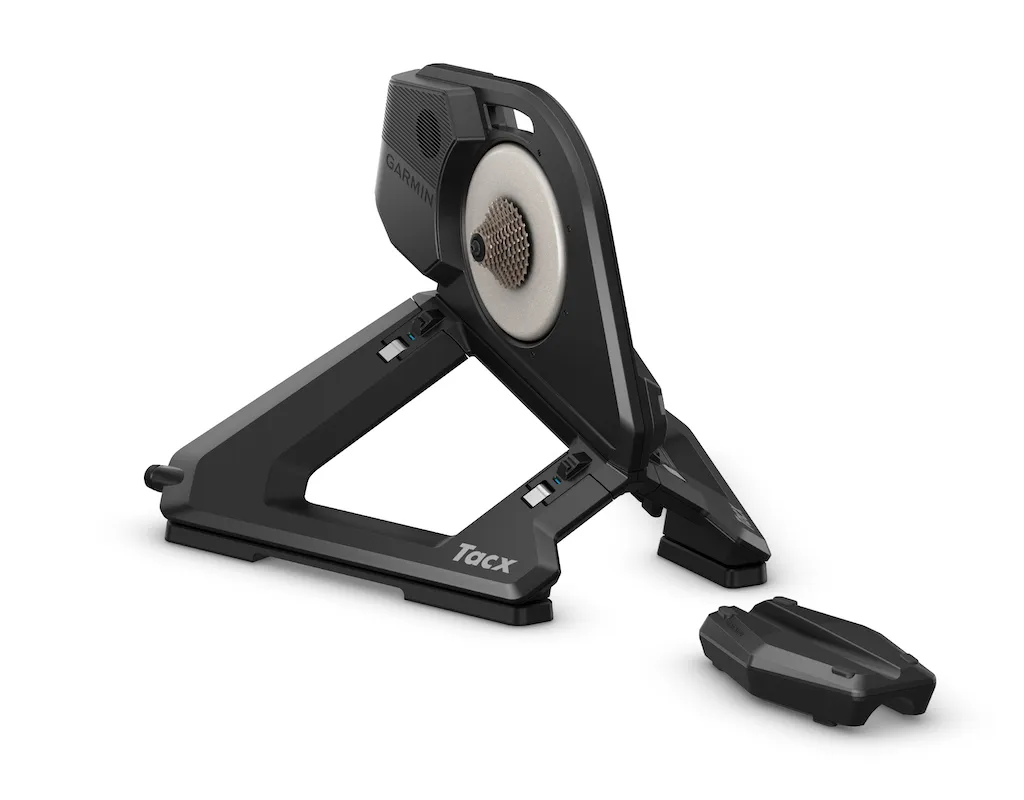
- £1,749.99 / $1,999.99
Garmin has joined Wahoo in adding ‘multidirectional movement’ to its top-end trainer for a more natural ride feel.
Also new is a convenient carry handle, a wider front riser block and the jaw-dropping price. Everything else on the 3M is largely the same as the 2T, and that’s no bad thing.
The power and cadence accuracy is within 1%, you get the same highly responsive ERG mode and fantastic ride feel, grade simulation is up to 25%, it’s very quiet and the trainer can handle 2,200-watt sprints.
The only notable thing missing compared to the Kickr Move is Wi-Fi compatibility (it’s an extra £129.99 for the Tacx Smart Network Adaptor).
This only really affects serious virtual racers who can’t afford to have connection dropouts, though.
Set-up is super simple, but like the Kickr Move, we weren’t blown away with the movement.
It leaves you feeling fresher after long sessions, but we’d find it hard to justify the extra outlay over the fantastic Neo 2T and other top trainers that cost less.
Verdict: A Rolls-Royce of a smart trainer, but at a huge cost.
Score: 79%
Elite Justo
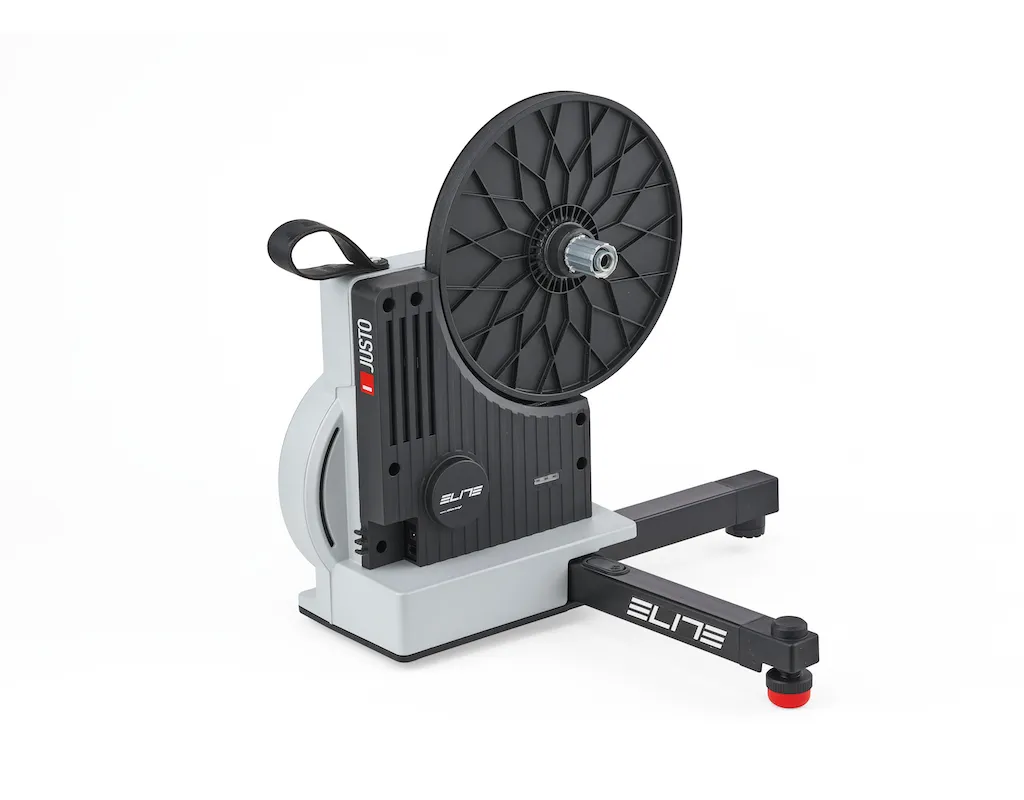
- £999.99 / $1,199.99
Elite’s range-topping Justo is cheaper than some comparable machines, but a grand is still a lot of money. Elite has therefore ensured the specs are on par or better than its rivals.
Power accuracy is under 1% and you get automatic calibration (a first for Elite), ‘Flex Feet’ for a more natural ride feel, 24% gradient simulation and a dual Bluetooth channel to connect additional devices.
Out the box, the Justo is reasonably easy to set up, but you do need your own cassette and must put the correct adapters on for your bike. A riser block is included to keep your front wheel secure.
At 17kg the Justo is probably the most portable of the current crop of deluxe smart trainers, but it still feels very secure and solid. If it had a weakness, it’d be the transition between low and high-power outputs in ERG mode.
Overall, we were impressed with the Justo, and it’s clearly better than its predecessors. With built-in Wi-Fi and further improvements to the ERG mode, the Justo could be even better.
Verdict: Fewer party tricks, but a dependable and compact deluxe trainer.
Score: 83%
Wahoo Kickr Snap
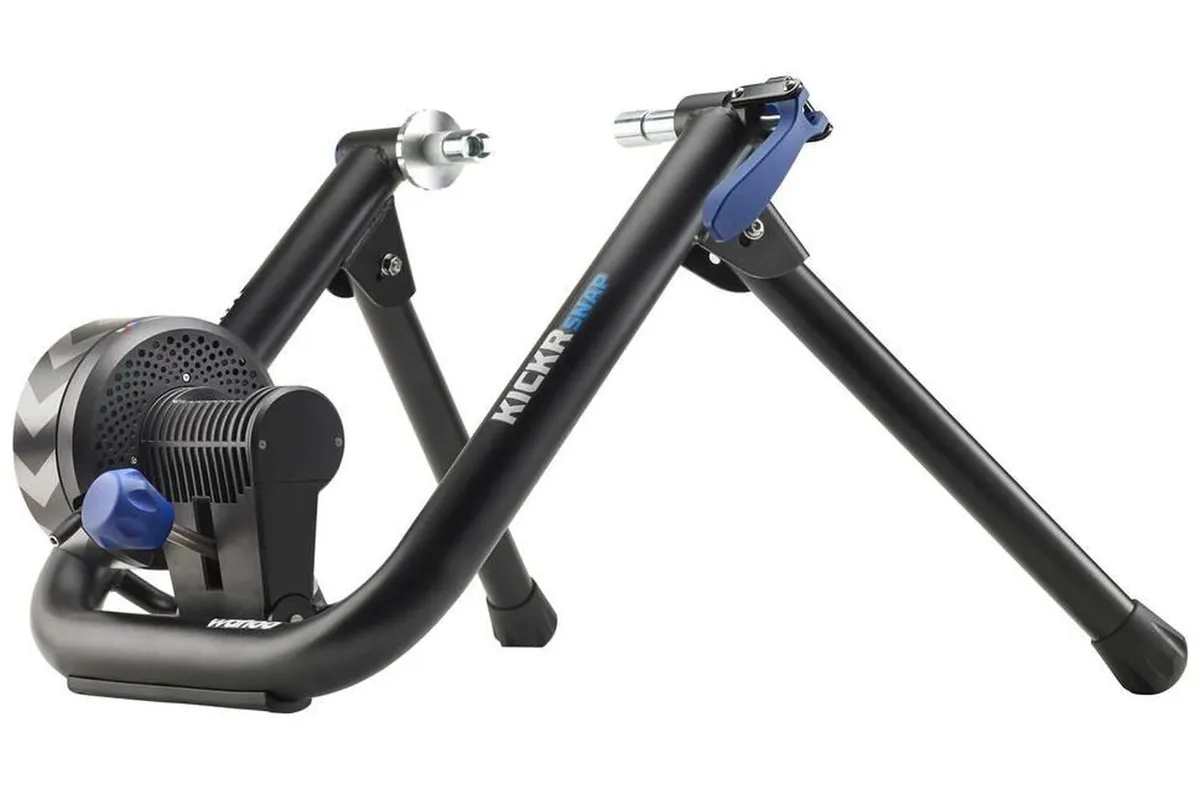
- £349.99 / $399.99
The Kickr Snap is Wahoo’s most affordable trainer, and its only wheel-on option.
Power accuracy is improved to /-3% in the latest version, but you’ll need to purchase an additional sensor to get cadence.
A front wheel block is included, grade simulation is up to 12% and max resistance is 1,500 watts. Set-up is simple, but some guesswork is needed to correctly tension the adjustment knob against your tyre.
A hefty 4.5kg flywheel creates impressive inertia, but during out-the-saddle efforts the Snap is a tad wobbly and we had a bit of tyre slippage.
Power accuracy was largely fine, requiring a spindown calibration with the correct tyre pressure to get it reading consistently compared to our power pedals.
While there’s nothing wrong with the Kickr Snap and it’s still one of the best if you prefer wheel-on, the price jump to cheaper direct drive trainers isn’t much, so its appeal has arguably waned in recent years.
Verdict: Not perfect, but a very capable and quiet trainer.
Score: 75%
Elite Suito
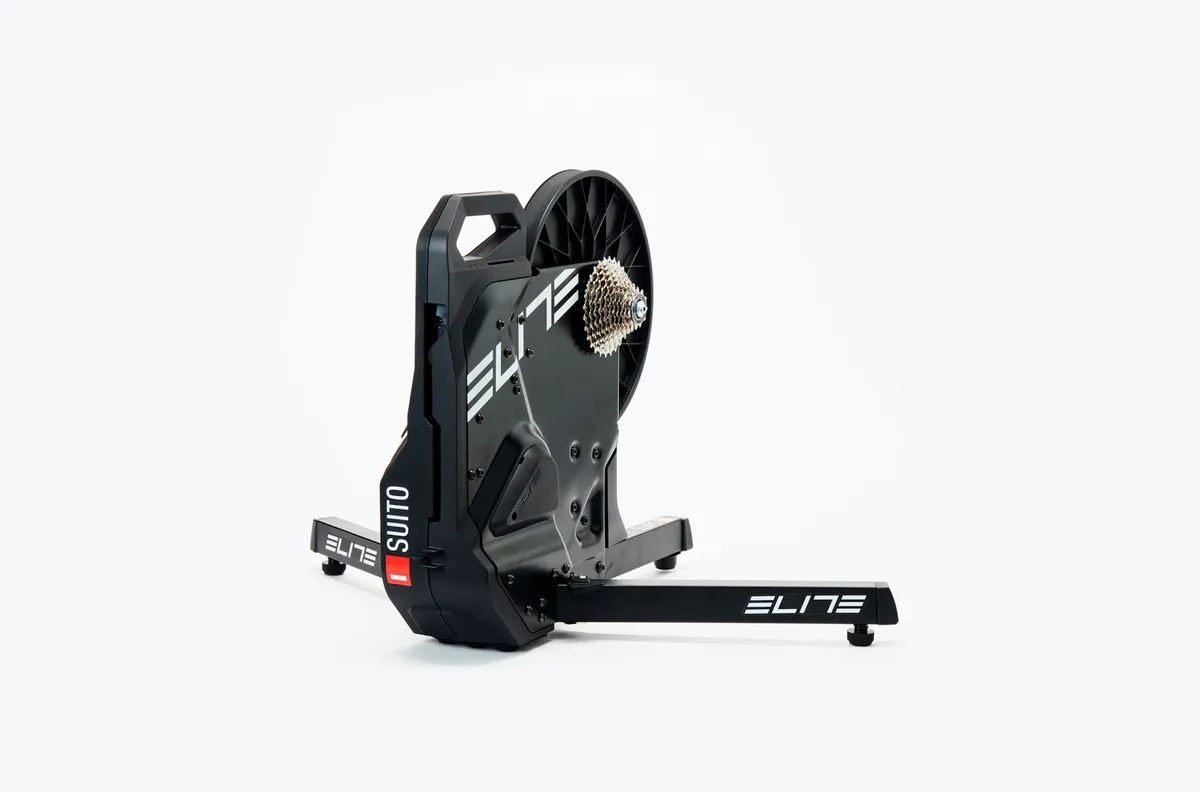
- £649
Weighing in at 14.5kg, the Suito is the lightest trainer on test and also has a useful carry handle. An 11-speed Shimano cassette out the box saves time and money, as do the quick release and thru-axle adapters, and the legs simply fold out, so it’s all ready to go.
A front wheel block is included, and there’s a cadence sensor, power measurements accurate to 2.5% and inclines up to 15%. It was a tad noisier than the others on test, according to our readings (peaking at 65 decibels), but it’s still impressively quiet.
It connects to our training app of choice instantly, and in ERG mode the resistance shifts smoothly. Although Elite reported firmware issues when the Suito first launched, we found the power readings to be largely accurate compared to our control pedals.
Verdict: All the features a triathlete needs, at a better price than the competition
Score: 90%
Wahoo Kickr Core
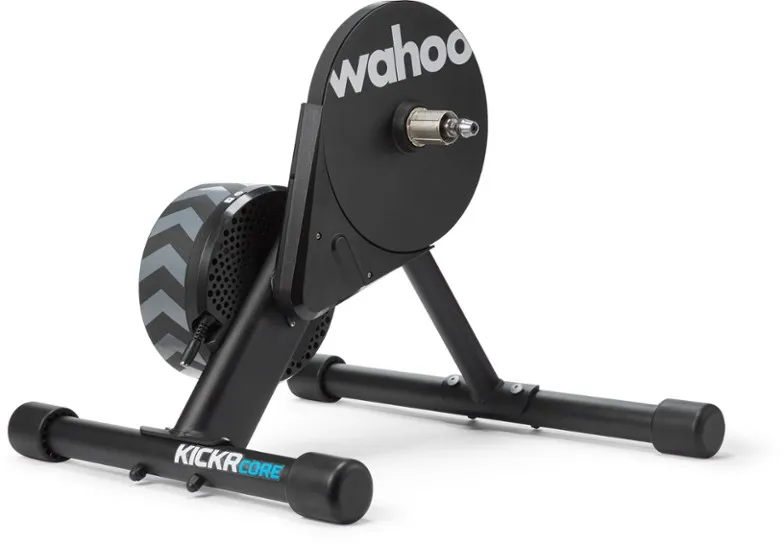
- £549.99 / $599.99
The Kickr Core essentially works the same as Wahoo’s flagship Kickr, with a smaller flywheel and a lighter feature list.
For £550 less you miss out on a built-in cadence sensor, while the max power it can withstand is 1,800 watts, as opposed to 2,200 on the Kickr.
Included in the price, you can either choose a cassette or the Zwift Cog, which let's you use your trainer with almost any 8-12speed bike. What's more, you also get a full year of Zwift membership included in the price!
You have to bolt the legs on yourself – a simple job that takes three minutes – and when you get started it connects to apps via Bluetooth quickly. It’s quiet, with the noise peaking at 62 decibels, and the power readings appear accurate with Wahoo claiming accuracy of /-2%.
The max incline is 16%, and you can also attach Wahoo’s Kickr Climb (available separately) to get the full virtual climbing experience. Sadly, moving it around is a pain, but if it’s for a dedicated pain cave this won’t be an issue.
Verdict: Awkward to move around, but a highly capable and quiet trainer.
Score: 87%
Tacx Neo 2T
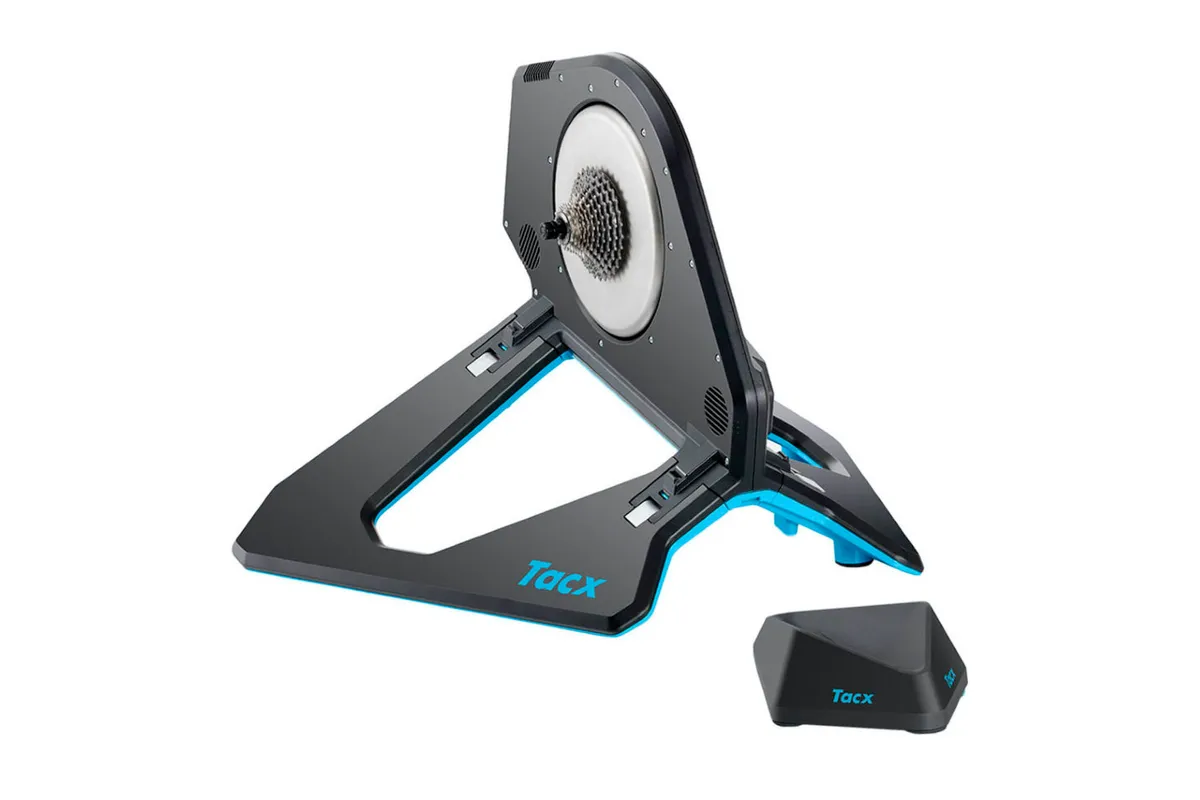
- £1,199 / $1,399.99
Tacx was playing catch-up before its original Neo trainer was updated, but the design has been nailed with the Neo 2T.
Proclaiming it as ‘the most powerful, accurate and realistic trainer to date’, there’s even more motor power (with the option to run it wireless), greater stability and, finally, thru-axle compatibility out the box.
It looks like a spaceship with the unit lighting up underneath, and the huge wings make the Neo 2T absolutely solid, even though it’s very heavy at 21.5kg. Power accuracy is spot on, and we could really notice the superior quality of the ride feel.
It’s also super quiet, with the lowest reading of the four direct drive trainers in the test. It’s a huge investment but, if you’re after the most capable smart trainer on the market, it’s worth it.
Verdict: Very pricey, but a truly deluxe trainer with all the bell and whistle.
Score: 92%
Saris H3
Buy it from Evans Cycles (£449.99)
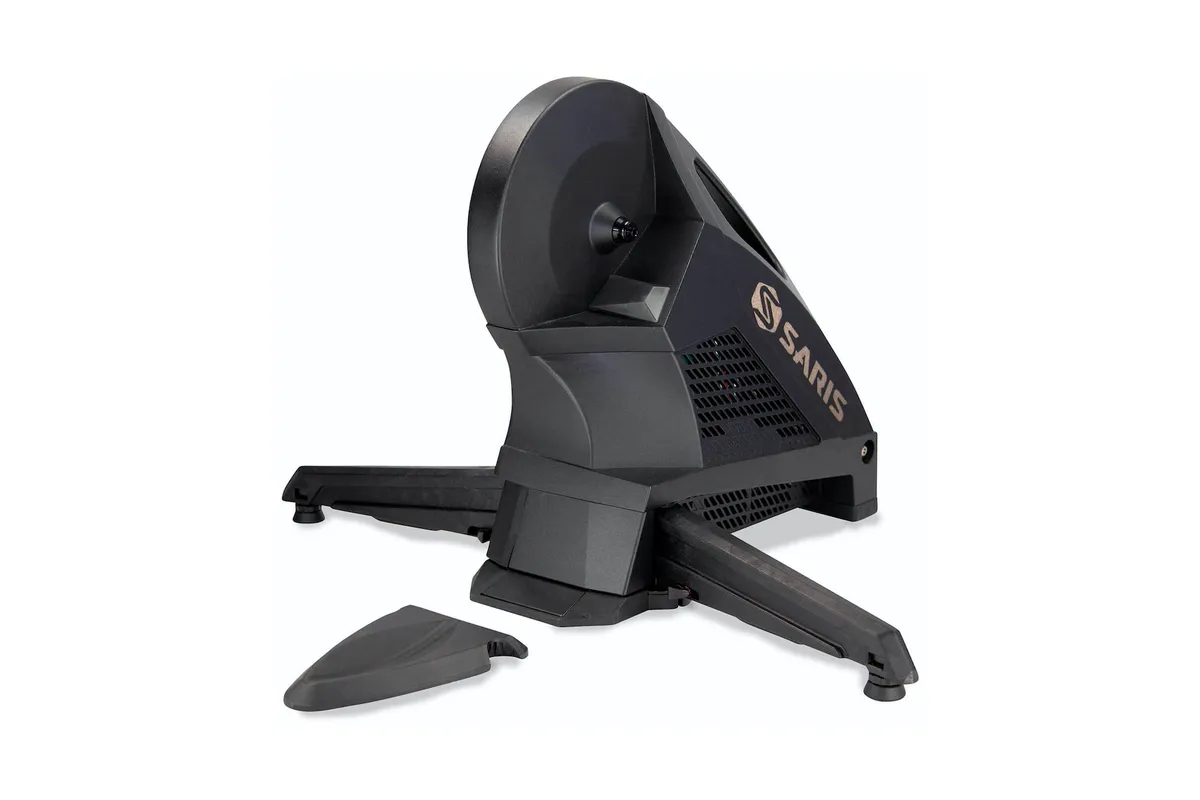
- £749.99 / $649.99
The Saris H3 doesn’t have a cassette included, which means you’ll have to purchase one separately.
Yet there’s everything else you’d expect from a top-end smart trainer, with claimed power accuracy of /-2%, a 2,000 watt max power rating and a built-in cadence sensor.
The H3 instantly connected to our app of choice, with noise peaking at 59 decibels at 35km/h.
The max climbing grade is 20%, almost as much as the Tacx which can go up to 25%. Saris has also added internal cooling tech to keep the data accurate.
The resistance felt responsive, and if you prefer riding without entertainment there’s also a ‘headless mode’ that simulates resistance without needing an app connection.
It’s chunky at 21.3kg, but there’s a carry handle to help you move it, while you get all the adapters you could need.
This trainer is often heavily discounted to as low as £449, which suggests an upgrade is on the way. But if you go for the H3, you won’t be disappointed.
Verdict: Feature-packed and accurate, but with a big price tag and overall weight.
Score: 86%
Tacx Flow

- £299.99 / $369.99
The Tacx Flow provides an affordable way into smart training and will be perfectly adequate for most casual indoor riders.
Set-up is simple, with only the flywheel needing to be bolted to the main frame before unfolding the legs and mounting your bike (a separate adapter is required for disc brake bikes). A riser block is included, and you’ll need to click the rear wheel into place.
The ride feel is very good and is neither noticeably better or worse than Elite’s Novo Force or Wahoo’s Kickr Snap.
It’s also impressively quiet, with our drivetrain making more noise than the roller itself during test rides.
Power accuracy is claimed to be under 5%, and the Flow was consistently inside this range compared to our go-to power meter pedals with no unexpected peaks or troughs.
The 1.6kg flywheel and max power ceiling of 800 watts make the Flow less suitable for furious sprints, but for most triathlon training it’ll do fine.
Verdict: Probably still the best budget wheel-on smart trainer.
Score: 82%
Saris M2
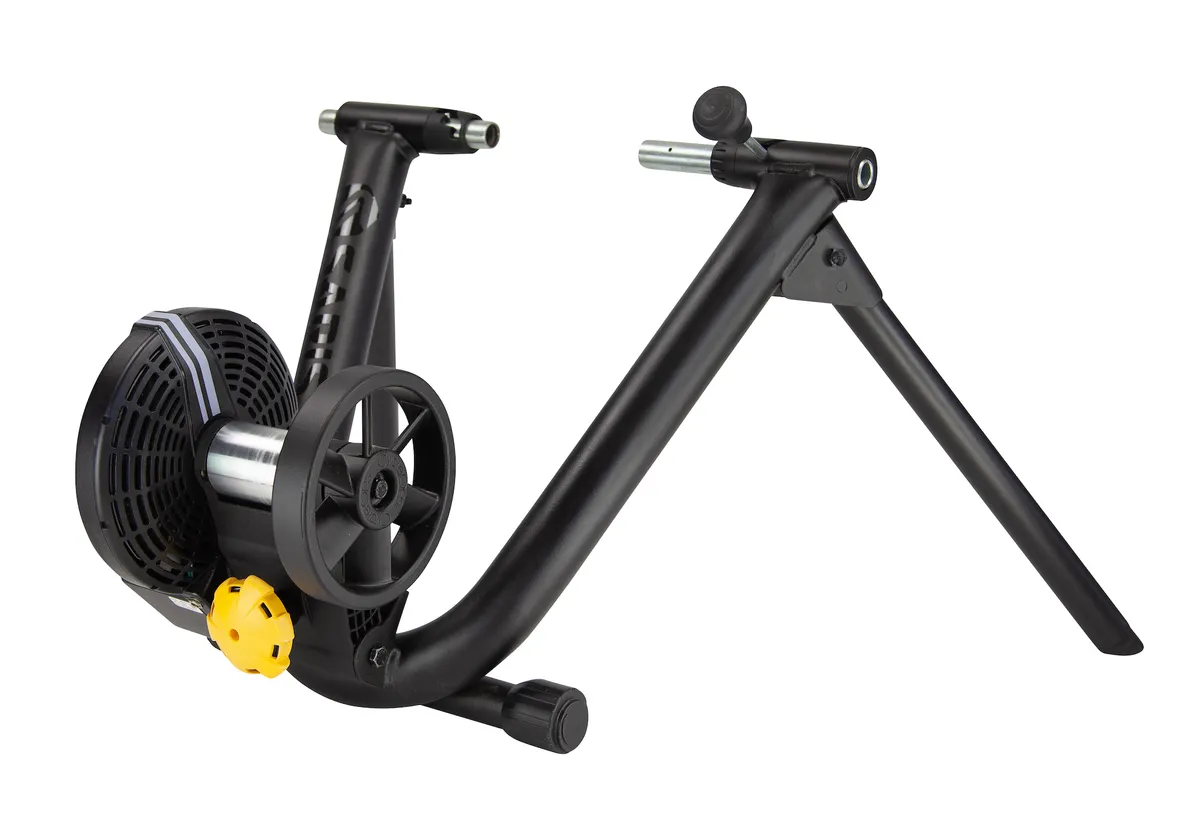
- £475 / $349
At £475, the Saris M2 is certainly at the more expensive end when it comes to wheel-on trainers, but if you don't want the faff of disassembling your bike and like classic trainers, it's a more affordable way to enjoy smart training.
Bluetooth and ANT connectivity allows you to connect to apps, while it also allows you to measure both power and cadence. During testing, it felt solid and sturdy, with a very limited amount of slippage present when taking on harder efforts.
With a weight of 10kg and foldable legs, you shouldn't have too much trouble moving it around, which is ideal if you don't want it out all of the time.
Verdict: It's not cheap, but it's a good option if you want a wheel-on trainer
Score: 79%
Read our full review of the Saris M2.
Elite Novo Force
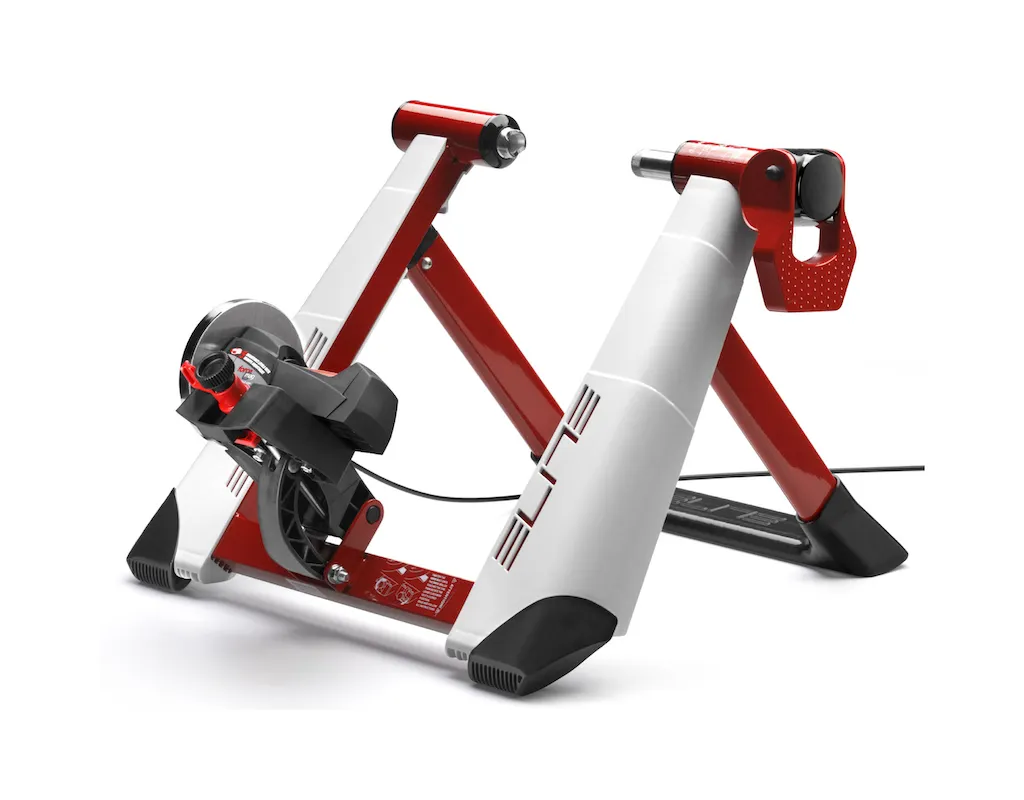
- £189.99 / $199.99
Elite’s Novo Force is old-school, and the only analogue trainer in this grouptest.
It’s wheel-on, with eight levels of magnetic resistance, and to use it with training apps you’ll need to get your hands on a Bluetooth sensor.
Paying more often means convenience with trainers nowadays and this rule feels very pronounced with the Novo Force, because set-up was a faff compared to the others, and the instructions are poor.
A couple of video tutorials later and we were away, and the ride feel was smooth and efficient on Elite’s Elastogel roller.
This is purported to decrease tyre wear and noise, and we found things fairly quiet for a classic trainer, producing about 75dB when we were riding steady.
Though it’s built well and will do fine for occasional indoor rides, it feels like the Novo Force has been somewhat left behind.
Non-smart turbo trainers like the Saris Fluid2 offer unlimited resistance for under £100, and are easier to set up and use.
Verdict: Perfectly functional, but becoming a relic of the past.
Score: 65%
How we tested the best turbo trainers
To decide which are the best turbo trainers, we used the same bike and did numerous sessions on each, connecting them to the Zwift training app.
We used power meter pedals to accurately check consistency in power readings, and took value, specification, ride feel and quietness into consideration to reach our verdicts.
All of these turbo trainers have been tested by former 220 Triathlon staff writer and current Road.cc editor Jack Sexty.
Each product has been scored out of 100, with anything over 90% proving to be market leading. Anything scoring between 80-89% also comes very highly recommended.
Scores between 70-79% signify a product that does a lot right, but may have one or two flaws, or be overpriced, while anything below 70% needs careful consideration before buying.
